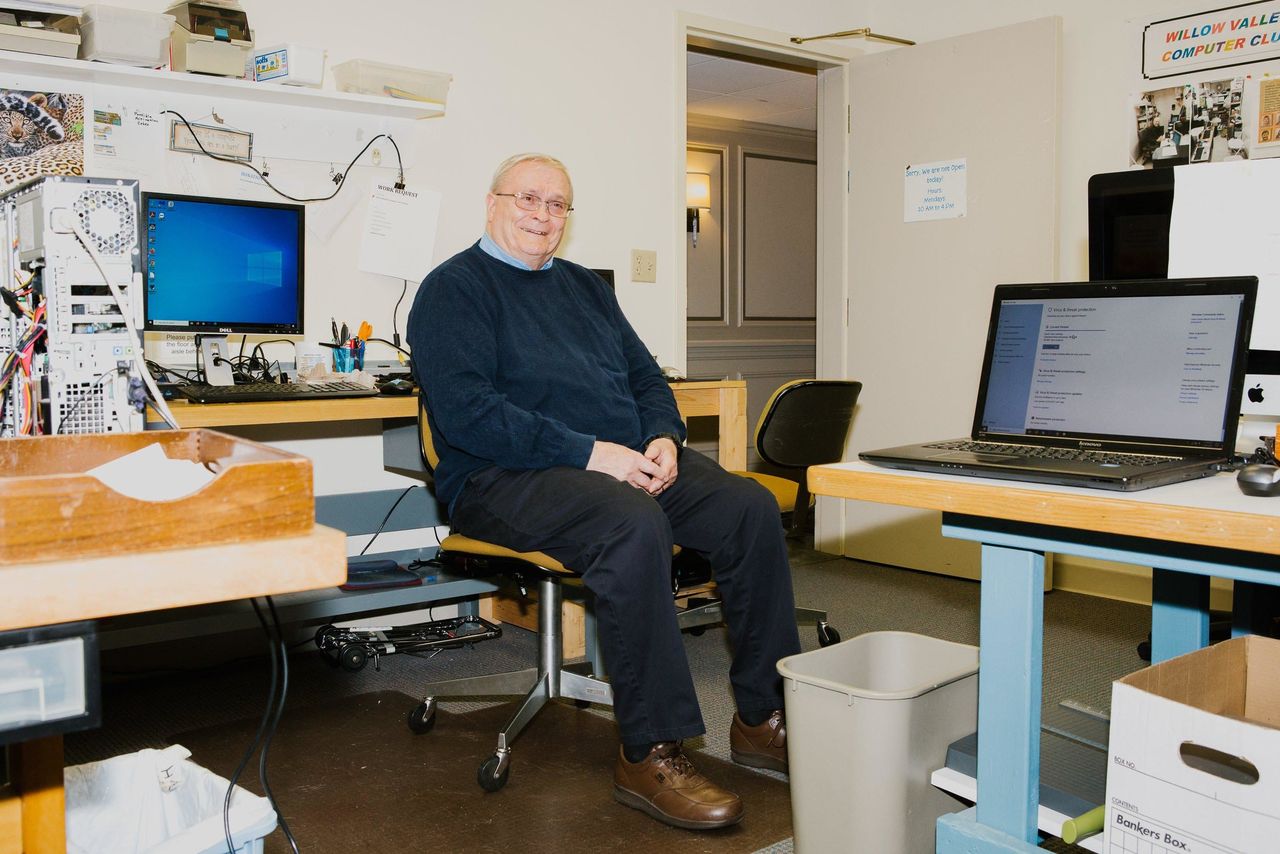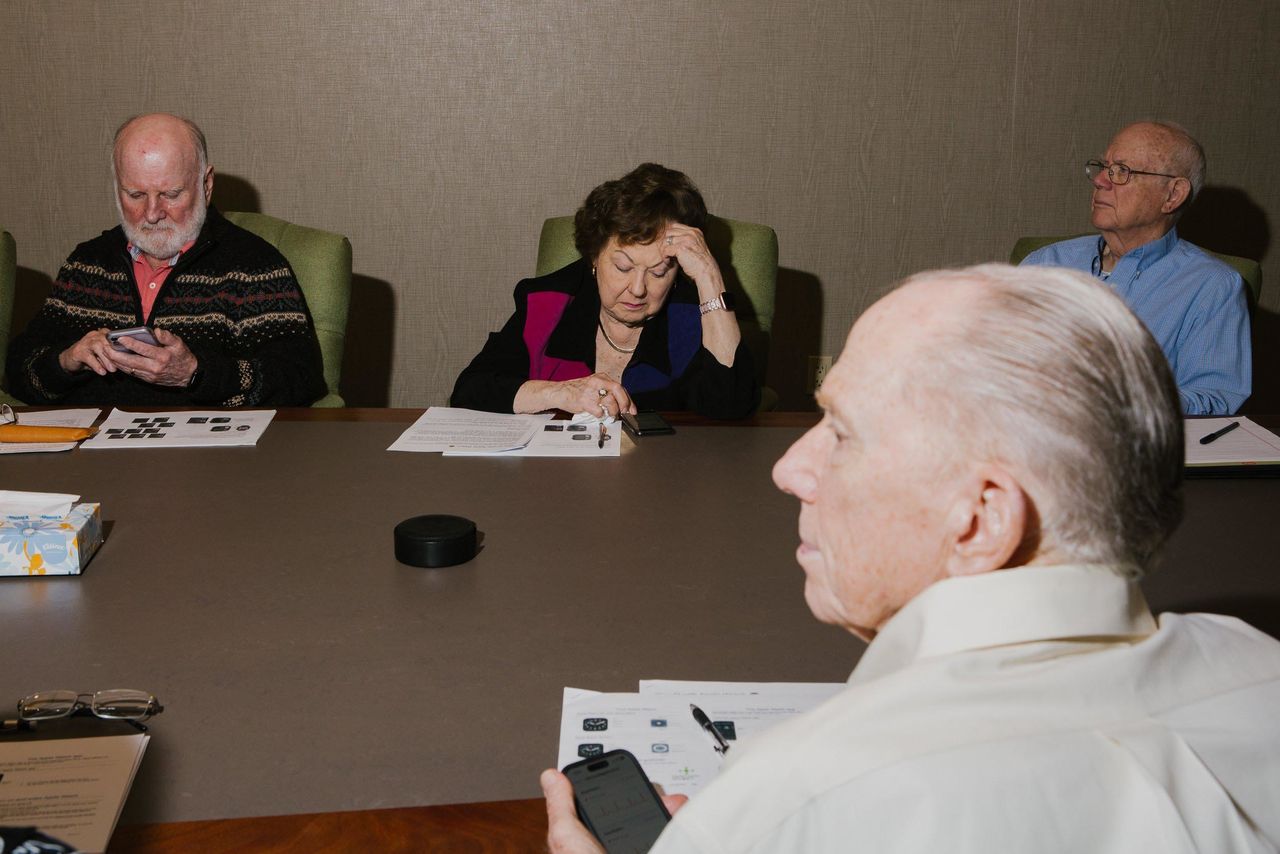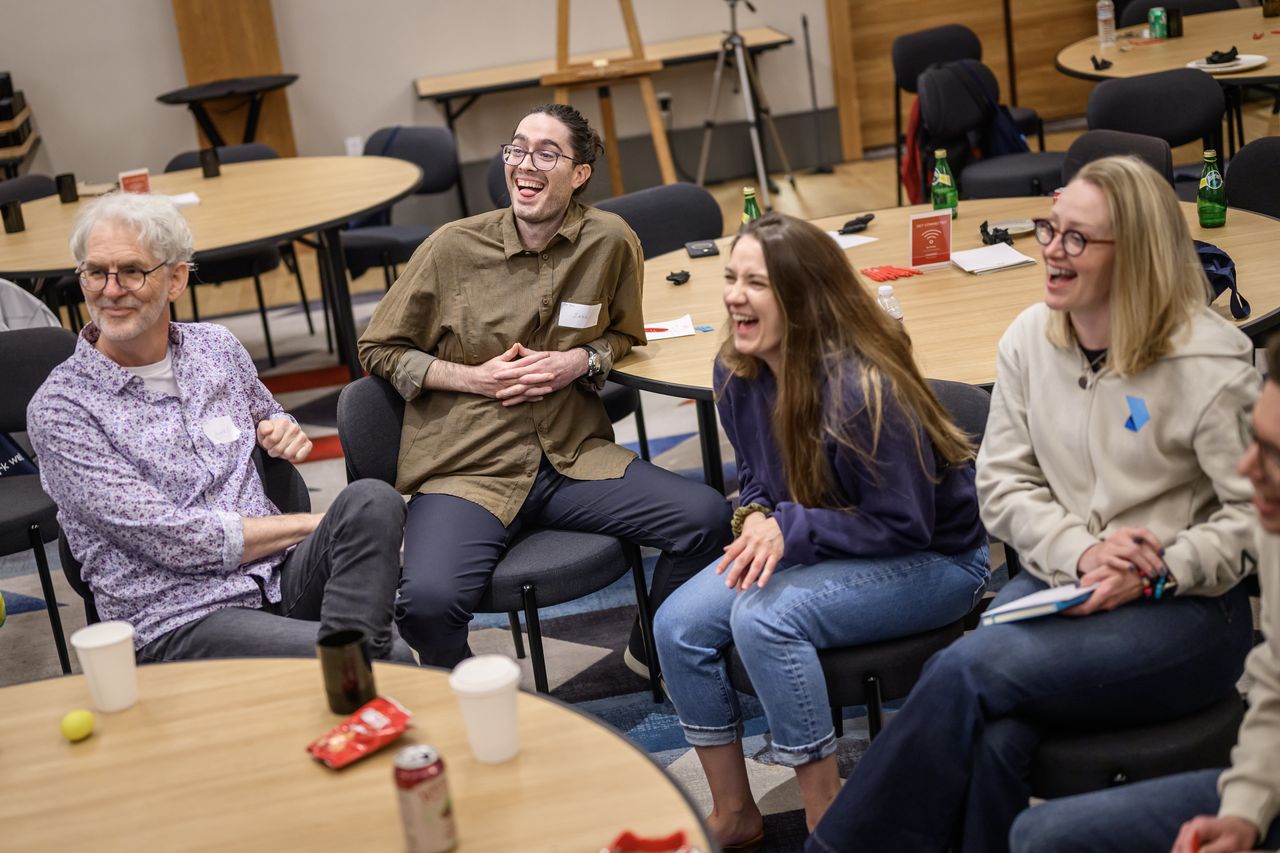Older Adults Are Obsessed With These Five Tech Topics
Fitness wearables and password managers are among the hottest topics for people ages 50 and up
The residents of a retirement community in the heart of Amish country are proving what experts on ageing have been saying for years: Older adults are as keen on new technologies as anyone else.
Willow Valley Communities, a 2,600-resident campus in Lancaster, Pa., has a tech centre staffed by volunteers. People can drop in for tech help or get their computers fixed. It also has an active computer club and an Apple products group that offer resident-taught classes.
The challenges of the pandemic accelerated tech adoption among older adults who, initially, just needed ways to communicate with far-flung loved ones. People ages 50 and older each spent an average of $912 on technology last year, up from $394 in 2019, according to the AARP.
But barriers remain as older Americans go beyond the video call. There is a lack of training programs and a concern that products aren’t always designed for an ageing populace, the organisation says.

At Willow Valley, many of the residents are focused on technology that can keep them active but won’t open them up to scams or frauds.
“Older adults aren’t into tech for tech’s sake,” says Jeff Weiss, chief executive of Age of Majority, a consulting firm that helps companies market to older adults. “For them to want to use and adopt technology, there has to be a practical reason.”
During my conversations with ageing experts and Willow Valley residents, these five topics came up again and again:
Health wearables
Wearable devices for tracking health and fitness are the hottest technology among older adults, according to leaders at several aging-tech organisations and companies. The AARP says 28% of older Americans own a wearable and 77% of those people use it daily.
The Centers for Disease Control and Prevention says people ages 65 and older need at least 150 minutes a week of moderate to intense activity, such as brisk walking, as well as strength and balance exercises.
Trish Macvaugh, a 76-year-old Willow Valley resident, began swimming competitively three years ago. She uses her Apple Watch Series 6 to log her heart rate and more particular stats, too. There’s her “swolf” score, the number of strokes taken plus the time it takes to swim a certain length, and her “VO2 max,” the maximum amount of oxygen she takes in during intense exercise.

“I can compare all of that to what I was doing a month ago, and it’s really encouraging to see how much I’m improving,” says Ms. Macvaugh, who is planning to compete in her second National Senior Games this summer.
A retired professor of English and women’s studies and mother of two, she also uses her Apple Watch to track her walking steadiness, as well as her performance when lifting weights and using the elliptical machine.
For tech advice, she turns to fellow resident Susan Culbertson, a 76-year-old retired computer-software trainer. Last fall, Ms. Culbertson created classes at Willow Valley to teach others how to use Apple products. The classes have gotten so popular, they’ve occasionally run out of seats for people in the conference room where they take place.
Using the iPhone’s Health app and tracking Apple Watch metrics—beyond just step counting—are top subjects. “People want to stay fit as long as possible,” Ms. Culbertson says.
Home assistants
Many residents at Willow Valley use voice-activated home assistants such as Amazon Echo and Google Nest Audio. They’re rising in popularity among older adults across the country, with one in three older adults owning one. Approximately 60% of the older adults who own a home assistant use it daily, the AARP says.
As with other age groups, older adults use home assistants largely to play music, ask questions, check weather or traffic and set alarms or timers.
Streaming services
Ms. Culbertson says that Willow Valley residents are very interested in streaming movies and shows and that many residents no longer watch network television. She recently taught a class on how to use Apple TV.
Older adults are fuelling the growth in video-streaming and subscribing to multiple services, including Netflix, Hulu and HBO Max.
They’re also combining their interest in streaming content with their interest in fitness. Older Adults Technology Services from AARP, a nonprofit that teaches tech to older adults, streams free fitness classes via Zoom. Its stretch classes have been wildly popular, says OATS Executive Director Tom Kamber.
Password protection
Al Williams, president of Willow Valley’s 845-member computer club, says password protection has been a hot topic among older people since news broke that the password manager LastPass was hacked.

Mr. Williams, an 83-year-old retired engineer, recently gave a presentation on choosing strong passwords and using password managers. (My colleague Nicole Nguyen says physical security keys—little dongles that you plug into a USB port or tap on your phone when logging into an account—offer even more protection.)
A recent poll from Age of Majority found that only 37% of people ages 55 and older use a password manager.
Scam prevention
Older adults have fallen prey to all kinds of scams conducted online and by phone.
OATS from AARP offers free online classes for older adults who want to burnish their digital skills, including one later this month on how to protect your personal information online.

Mr. Williams says Willow Valley residents are interested in this, too. He plans to give a “Scammers and other invasive species” presentation to teach people to recognise social engineering.
Teaching tech to a span of older adults, ranging from 55 to over 90, requires a certain skill. “The main thing we have to do,” he says, “is to talk about tech in terms of solving a problem, not as a lecture.”
 Copyright 2020, Dow Jones & Company, Inc. All Rights Reserved Worldwide. LEARN MORE
Copyright 2020, Dow Jones & Company, Inc. All Rights Reserved Worldwide. LEARN MORE
This stylish family home combines a classic palette and finishes with a flexible floorplan
Just 55 minutes from Sydney, make this your creative getaway located in the majestic Hawkesbury region.
As Paris makes its final preparations for the Olympic games, its residents are busy with their own—packing their suitcases, confirming their reservations, and getting out of town.
Worried about the hordes of crowds and overall chaos the Olympics could bring, Parisians are fleeing the city in droves and inundating resort cities around the country. Hotels and holiday rentals in some of France’s most popular vacation destinations—from the French Riviera in the south to the beaches of Normandy in the north—say they are expecting massive crowds this year in advance of the Olympics. The games will run from July 26-Aug. 1.
“It’s already a major holiday season for us, and beyond that, we have the Olympics,” says Stéphane Personeni, general manager of the Lily of the Valley hotel in Saint Tropez. “People began booking early this year.”
Personeni’s hotel typically has no issues filling its rooms each summer—by May of each year, the luxury hotel typically finds itself completely booked out for the months of July and August. But this year, the 53-room hotel began filling up for summer reservations in February.
“We told our regular guests that everything—hotels, apartments, villas—are going to be hard to find this summer,” Personeni says. His neighbours around Saint Tropez say they’re similarly booked up.
As of March, the online marketplace Gens de Confiance (“Trusted People”), saw a 50% increase in reservations from Parisians seeking vacation rentals outside the capital during the Olympics.
Already, August is a popular vacation time for the French. With a minimum of five weeks of vacation mandated by law, many decide to take the entire month off, renting out villas in beachside destinations for longer periods.
But beyond the typical August travel, the Olympics are having a real impact, says Bertille Marchal, a spokesperson for Gens de Confiance.
“We’ve seen nearly three times more reservations for the dates of the Olympics than the following two weeks,” Marchal says. “The increase is definitely linked to the Olympic Games.”

Getty Images
According to the site, the most sought-out vacation destinations are Morbihan and Loire-Atlantique, a seaside region in the northwest; le Var, a coastal area within the southeast of France along the Côte d’Azur; and the island of Corsica in the Mediterranean.
Meanwhile, the Olympics haven’t necessarily been a boon to foreign tourism in the country. Many tourists who might have otherwise come to France are avoiding it this year in favour of other European capitals. In Paris, demand for stays at high-end hotels has collapsed, with bookings down 50% in July compared to last year, according to UMIH Prestige, which represents hotels charging at least €800 ($865) a night for rooms.
Earlier this year, high-end restaurants and concierges said the Olympics might even be an opportunity to score a hard-get-seat at the city’s fine dining.
In the Occitanie region in southwest France, the overall number of reservations this summer hasn’t changed much from last year, says Vincent Gare, president of the regional tourism committee there.
“But looking further at the numbers, we do see an increase in the clientele coming from the Paris region,” Gare told Le Figaro, noting that the increase in reservations has fallen directly on the dates of the Olympic games.
Michel Barré, a retiree living in Paris’s Le Marais neighbourhood, is one of those opting for the beach rather than the opening ceremony. In January, he booked a stay in Normandy for two weeks.
“Even though it’s a major European capital, Paris is still a small city—it’s a massive effort to host all of these events,” Barré says. “The Olympics are going to be a mess.”
More than anything, he just wants some calm after an event-filled summer in Paris, which just before the Olympics experienced the drama of a snap election called by Macron.
“It’s been a hectic summer here,” he says.

AFP via Getty Images
Parisians—Barré included—feel that the city, by over-catering to its tourists, is driving out many residents.
Parts of the Seine—usually one of the most popular summertime hangout spots —have been closed off for weeks as the city installs bleachers and Olympics signage. In certain neighbourhoods, residents will need to scan a QR code with police to access their own apartments. And from the Olympics to Sept. 8, Paris is nearly doubling the price of transit tickets from €2.15 to €4 per ride.
The city’s clear willingness to capitalise on its tourists has motivated some residents to do the same. In March, the number of active Airbnb listings in Paris reached an all-time high as hosts rushed to list their apartments. Listings grew 40% from the same time last year, according to the company.
With their regular clients taking off, Parisian restaurants and merchants are complaining that business is down.
“Are there any Parisians left in Paris?” Alaine Fontaine, president of the restaurant industry association, told the radio station Franceinfo on Sunday. “For the last three weeks, there haven’t been any here.”
Still, for all the talk of those leaving, there are plenty who have decided to stick around.
Jay Swanson, an American expat and YouTuber, can’t imagine leaving during the Olympics—he secured his tickets to see ping pong and volleyball last year. He’s also less concerned about the crowds and road closures than others, having just put together a series of videos explaining how to navigate Paris during the games.
“It’s been 100 years since the Games came to Paris; when else will we get a chance to host the world like this?” Swanson says. “So many Parisians are leaving and tourism is down, so not only will it be quiet but the only people left will be here for a party.”
This stylish family home combines a classic palette and finishes with a flexible floorplan
Just 55 minutes from Sydney, make this your creative getaway located in the majestic Hawkesbury region.






















